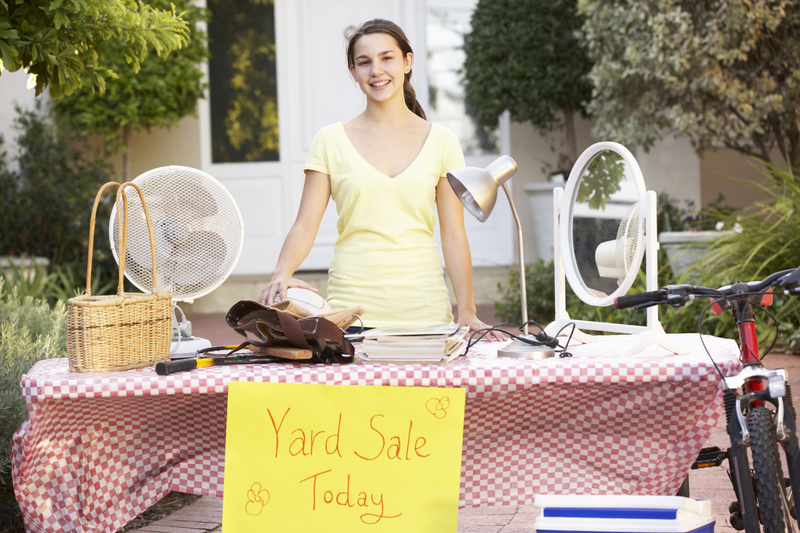Guide to Responsible Recycling of Pots and Pans
Upgrading your cookware and wondering what to do with your old pots and pans? Instead of tossing them into the trash, responsible recycling methods can help you minimize waste, conserve resources, and contribute to a healthier environment. This comprehensive guide explores the best practices and environmentally conscious options for disposing of non-stick, cast iron, stainless steel, aluminum, and copper cookware. By the end of this article, you'll know exactly how to recycle your pots and pans in a safe, sustainable manner.
Why Proper Recycling of Old Cookware Matters
Pots and pans are made from durable materials like metal and coated surfaces, which do not readily decompose in landfills. Irresponsible disposal can lead to serious environmental issues, including:
- Landfill overflow: Bulky cookware occupies significant landfill space, contributing to ever-growing waste problems.
- Resource wastage: Many cookware materials like aluminium and steel are recyclable and valuable for resource conservation.
- Toxicity risks: Non-stick and coated pans can leach chemicals and pollutants if not disposed of correctly.
- Economic impacts: Recycling helps create jobs, save energy, and reduce the cost of raw materials in manufacturing.
Adopting responsible recycling of pots and pans supports global efforts to protect the environment and reduce your carbon footprint.

Assessing Your Cookware: Can Pots and Pans Be Recycled?
Before you recycle your old cookware, it's essential to determine its material and condition. Here's a quick overview of common cookware types and their recyclability:
- Aluminum Cookware: Highly recyclable; easily processed through scrap metal centers.
- Stainless Steel Pots and Pans: Extremely valuable to scrap yards and metal recyclers; fully recyclable.
- Copper Pans: Often recycled or sold for scrap. Copper is a premium metal and should never go to landfill.
- Cast Iron Skillets: Can be recycled or even restored for future use.
- Non-Stick Cookware (Teflon & Ceramic-Coated): More complicated, as non-stick coatings may contain chemicals that require special handling.
Tip:
Check your local recycling regulations for specific guidelines on cookware, as not all centers ACCEPT the same materials.
Preparation Steps: How to Ready Pots and Pans for Recycling
To ensure successful recycling of your old pots and pans, follow these preparation steps:
- Clean thoroughly: Remove residual food, oils, and debris. Most recycling facilities require clean cookware.
- Separate materials: Take off removable handles, lids, or plastic pieces as much as possible, especially from pans with wooden or plastic components.
- Check for coatings: Non-stick or painted pans may be handled differently. Sometimes, these should not be included with plain metal recycling.
- Identify materials: Know if your pan is aluminum, copper, steel, or cast iron; this helps recycling centers process it more efficiently.
Different Options for Responsible Recycling of Cookware
Now that your pans and pots are ready, it's time to find the best recycling method. Here's an in-depth look at your options:
1. Scrap Metal Recycling Centers
Most types of cookware are considered scrap metal, and your local scrap yard is a top option for pots and pans recycling. Here's how to proceed:
- Locate a nearby scrap metal center or municipal recycling depot that accepts household metals.
- Bring separated metals: aluminum, stainless steel, cast iron, or copper. Some facilities pay for valuable metals, like copper or brass.
- Confirm how to handle non-stick coatings--sometimes these coatings must be removed in advance or handled via special stream.
2. Donate Usable Pots and Pans
Is your cookware still in usable condition? Consider donating it rather than recycling! This sustainable choice gives your pots and pans a second life. Try:
- Local charities or thrift stores
- Community shelters or soup kitchens
- College student programs or housing services
Be responsible: Only donate clean, safe-to-use, and non-damaged cookware.
3. Manufacturer Take-Back & Eco-Recycling Programs
Some cookware brands now run take-back initiatives for old pots and pans. Examples include:
- Specific drop-off centers
- Mail-back programs for end-of-life cookware
- Discounts or credits toward new products upon recycling your old items
Always search the manufacturer's website or customer service page for available sustainability efforts.
4. Local Recycling Bin or Household Hazardous Waste Events
Depending on your municipality, certain pots and pans can go in curbside recycling (usually metal ones with no plastic or chemical coating). If not, check for:
- Special collection drives for household hazardous waste, which sometimes accepts non-stick pans and other unusual items.
- Community recycling events, which may cover bulky or complex Items not handled by everyday curbside collection.
5. Upcycling and Creative Repurposing
Give your old cooking pans a new lease on life by transforming them into planters, storage bins, or quirky home decor. This keeps materials in use and cuts landfill waste. Try:
- Turning cast iron pans into rustic serving trays
- Creating outdoor flowerpots from aluminum pots
- Using lids as wall decor or bulletin boards
Search online for "upcycling old pots and pans" to spark your creativity.
Responsible Disposal of Non-Stick, Damaged, or Unusual Cookware
Recycling non-stick cookware (like those coated with Teflon or ceramic) can be challenging because these pans may contain chemical coatings that don't break down or recycle easily. Here's what you can do:
- Check the manufacturer: See if they offer a take-back or disposal guidance program.
- Contact your recycling center: Ask if non-stick pans are accepted and under what conditions.
- Household hazardous waste facilities: These centers sometimes process damaged or chemical-coated pans as hazardous waste.
Never incinerate non-stick cookware--high heat can release toxic fumes. If possible, always recycle through a facility able to handle the material safely.
What Happens to Pots and Pans After Recycling?
Once old cookware is delivered to a recycling facility, it follows a specific process:
- Sorting: Pans are sorted by metal type (steel, aluminum, copper, etc.).
- Cleaning: Contaminants and non-metal parts are removed.
- Melting: Metals are melted down and purified in large furnaces.
- Reforming: The pure metal is turned into sheets, bars, or new blocks for manufacturing fresh products--including new cookware!
This loop creates a sustainable supply chain and drastically reduces the environmental burden compared to mining new raw materials.
Common Myths about Recycling Pots and Pans
Let's bust a few misconceptions surrounding the recycling of cookware:
- Myth #1: "All non-stick pans must go to landfill." - Not true! Many facilities can process non-stick pans, especially if you remove handles, knobs, and separate parts where possible.
- Myth #2: "Cookware isn't valuable as scrap." - Wrong; metals like copper, steel, and aluminum are highly valuable and sought after by recyclers.
- Myth #3: "Damaged pans can't be donated." - While dangerous, broken, or warped pans shouldn't be donated for cooking, you can still donate them to art projects or upcycle creatively.
How to Find Cookware Recycling Near You
Looking for a responsible place to recycle your pots and pans? Try the following approaches:
- Recycling locator tools: Use websites like Earth911, which allow you to search by item and zip code.
- Contact your local council: Municipal waste departments can guide you to approved recycling sites or upcoming events.
- Visit local scrap yards: Most will accept metal cookware and may pay for valuable items.
- Ask at cookware retailers: Especially sustainable brands, which may offer take-back service.
Eco-Friendly Cookware: The Next Step in Sustainability
When replacing your cookware, choose brands that:
- Use recycled metals in production
- Offer end-of-life recycling programs
- Are committed to non-toxic, environmentally safe coatings
Popular eco-friendly cookware brands often highlight their green credentials on their websites. You can simultaneously enjoy high performance and peace of mind regarding your environmental impact.

FAQs: Responsible Recycling of Pots and Pans
- Can I recycle broken or heavily scratched pans?
Yes, metal pans can typically be recycled even if damaged. Donate only if they're safe for further use. - What if my pot has a plastic handle?
Separate plastic or wooden parts where possible; the metal can go for recycling while plastic is disposed of according to local rules. - Are glass lids recyclable?
Tempered glass lids may not be accepted in glass recycling streams. Check the guidelines in your area.
Conclusion: Make Cookware Disposal a Responsible Habit
With landfills under pressure, every item you divert for recycling, especially metals, benefits future generations. Responsible recycling of pots and pans is critical for environmental stewardship--ensuring valuable materials are reused, not wasted. Whether you choose metal recycling, manufacturer take-back, donation, or creative upcycling, every step makes a difference.
Upgrade your kitchen and your sustainability credentials by making eco-friendly cookware disposal part of your routine.
Start Recycling Your Old Cookware Responsibly--Today!
Your planet, your choice. Make it a sustainable one.